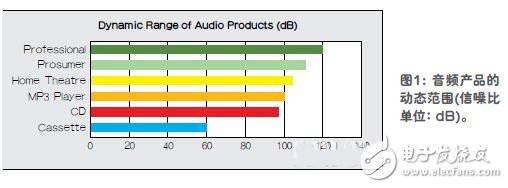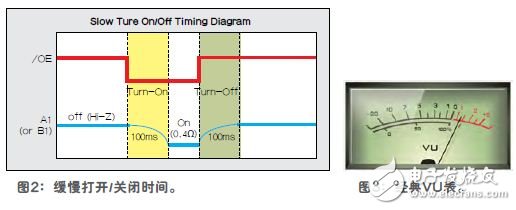There are two important cross-cutting factors that drive the development of mobile phone and tablet audio, namely: 1. Increasing demand for product differentiation; 2. Higher customer expectations. Smartphone and tablet OEMs are using various combinations of application processors and baseband modems (integrated and combined) from various commercial IC suppliers to build platforms around chipsets. Therefore, original equipment manufacturers do not control or differentiate functional groups as they did when specifying and / or designing chipsets. Today, they must seek other ways to create differentiated mobile user experiences, including providing an audio experience anytime, anywhere. To achieve this goal, it is necessary to make full use of the speakers of mobile phones and tablets, and as we all know, their volume is very low. Therefore, it is necessary to add DSP sound processing (aka: audio post-processing), eliminate popping sounds, and use other audio techniques to produce high power consumption without high unnecessary secondary effects (such as electromagnetic interference, etc.) Output (high volume) speaker amplifier; also need to determine some important parameters, technologies, trends and innovative means used by engineers to provide better sound.
When using a commercial chipset, mobile phone companies need to find new ways to achieve a variety of product appearance, feel, sound, and what functions users can experience. For sound, not long ago, mobile phone users had very low requirements for audio performance, so no matter what kind of amplifier is placed in the core chipset. However, as more and more innovative phones, tablets and applications appear on the market, user expectations have also increased rapidly, including audio. Users want to enjoy good audio quality anytime, anywhere.
By adding DSP sound processing (aka: audio post-processing), you can eliminate puffs and use other audio techniques to create high-output (high-volume) speaker amplifiers.
Audio engineering is an artistic work, because sound is a subjective personal experience, audio engineering requires constant weighing and judgment. The following example shows several techniques used by audio engineers to introduce better sound to mobile platforms. Each is worth exploring in depth, but we will only give a brief introduction to review several important issues, trends, and solutions.
1. Dynamic range, signal-to-noise ratio (SNR) and total harmonic distortion plus noise (THD + N)
The classic measure of audio performance is the signal-to-noise ratio or dynamic range. Like many other comparable measures of product performance, the signal-to-noise ratio is constrained by the "technical gap", and the different interpretations of the "technical gap" are used to best locate the product, not entirely considering objective purity. To provide better objectivity, the Institute of Audio Engineers (AES) created standards for audio engineering measurement. Total harmonic distortion plus noise is a more common and useful measure than total harmonic distortion alone, because the use case (ie, noisy substance) can be reproduced more accurately. Bring it into the formula: total harmonic distortion + noise = harmonic power + sum of noise power divided by total output power. Note that the output power is only meaningful when the distortion level during measurement is constant.
Figure 1 compares the dynamic range of different audio devices from CD to professional audio. The driving force for audio performance in mobile phones and tablets is to surpass the dynamic range of MP3 players (about 100 dB), and today's mobile phone and tablet markets are also achieving this goal.

2. Microphone and audio post-processing
It is necessary to support several microphones on mobile platforms, because DSP echo cancellation and other advanced audio and voice processing require multiple microphones. Differential microphone input is used to reduce the occurrence of noise, radio frequency and crosstalk. In mobile audio systems, microphones, audio codecs and DSP processors work together to achieve advanced functions. The enhancement of smartphone audio is being concentrated on the battlefield of DSP. DSP echo cancellation, 3D space and other audio functions use multiple microphones to provide input for processing. A simple example is the need for at least two microphones in order to separate the speech signal from the background noise. One microphone listens to speech and background noise, and the other listens to background noise only. The DSP / codec system then receives those signals and reduces noise to provide a clearer voice signal.
The use of digital microphones (electret condenser microphones and MEMS microphones) instead of analog microphones is gaining popularity and is being promoted by mobile original equipment manufacturers because their digital traces interfere with the noise of mobile phone processors and broadcast integrated circuits (such as baseband modems) Have better immunity.
3. Reduce puffs
Puff noise is a classic problem in audio. It often occurs when the audio input is turned on, off, muted, or connected to different loads. It may produce transients that can be heard through speakers or headphones. Reducing puffs is becoming more and more important in mobile applications, because mobile operations naturally cause objects to shut down to save power. Of course, this means that it should be turned on again to create on / off and off / on transitions, resulting in sound transients. In the past, reducing the popping noise was solved by an external capacitor. However, as the level of integration improves, in order to reduce expenses and improve performance, it is necessary to reduce the capacitance and provide innovative chip methods to reduce the noise.
When plugged into a mobile phone, the transition between internal and external microphones is another source of puffs. This can be managed by providing an insertion detection circuit. Opening and closing slowly is another way to suppress popping noises. Slow opening and closing is very useful for audio drivers that do not have DC blocking capacitors because it can generate a DC offset voltage. Slow opening, as its literal meaning, the ramping switching resistance makes the load voltage slew rate increase slowly, so that the popping noise will not appear. One method is to use an integrated audio switch that turns on slowly. Fairchild in Figure 2 slowly turns on the audio switch to demonstrate this concept. This product has adjustable (slow) opening and closing, its range is 1 ms ~ 200 ms. This figure shows the 100 ms setting.
Especially for mobile devices, the puff design tips become very critical, which is another reason why audio engineering looks like art, because the perception of puff is subjective, making experience and some small tricks a success important part.
4. Dynamic range control (DRC) and speaker protection
Those who turn up the sound (not) of a home stereo amplifier will pay close attention to the situation when the speakers are overdriven. Your ears will have to endure harsh, distorted sounds. On the other hand, if the amplifier is not close to the maximum limit of the speaker, the speaker will not produce a loud sound. Need to approach a microwire. One method is to control the gain of the amplifier through dynamic range control and try to optimize the sound quality to prevent distortion when the recorded signal level is maximized. This is just like when performing analog recording in the past, you can manually adjust the input volume while observing the VU meter of the recorder (Figure 3), so that the pointer is always outside the red area when the loud path is reached, and increase the volume during quiet periods to mask the simulation The deviation sound of the recorder.

This literally means manual dynamic range compression. Today, this can be done automatically by the integrated circuit, monitoring the signal level and providing feedback to increase or decrease the gain. The result is to suppress the sound range (ie high and low levels and low and high levels), so that the listener hears better. However, as the volume level of the small speaker increases, so does the risk of damage. Therefore, speaker protection methods are becoming increasingly important.
One of the most dangerous phenomena that may occur in speakers is the phenomenon of wave cancellation. When the amplifier drive exceeds the speaker limit, wave cancellation occurs, which makes the signal look more and more like a square wave instead of a general audio signal. The term "wave elimination" is used because its upper part looks flat (Figure 4).
The reason why wave cancellation is dangerous for speakers is that when the signal starts to be flattened, more high-order harmonics will be generated, thus showing more energy than the speaker can withstand, causing permanent damage. Mobile audio amplifiers now add anti-wave cancellation mechanisms to limit their output and better match speakers. The most basic method for preventing wave cancellation is to set the gain so that it is not higher than the level preset using automatic gain control (AGC) technology. At present, other more mature speaker protection methods are being developed to actively monitor the status of the speaker and feed back information to the amplifier to ensure safe operation. Some active speaker protection schemes can use the small signal processor of the amplifier itself for signal analysis. All types of speaker protection, whether active or passive, can make it easier for mobile platform manufacturers to provide louder, longer-lasting audio, so speaker protection will continue to be a key issue in the audio kingdom.
Wood Diffuser PRECAUTIONS, please read below to avoid any malfunction to the unit:
- If you are not a technician do not try to dismantle the Wood Essential Oil Diffuser to repair it. Contact the seller if repair is necessary.
- Do not turn power on when the tank is empty.
- Do not touch the atomization plate.
- Clean regularly as per Maintenance instructions to avoid malfunction.
- Always unplug before maintenance.
- For hygiene reasons, after use, pour out the remaining water from the tank and wipe with a clean dry cloth.
- Only use the measuring cup to add water into the tank, do not fill water directly from the sink.
- Do not let mist come in direct contact with furniture, clothing, walls, etc.
- Wooden Oil Diffuser keep out of direct sunlight.
- Always keep on a hard, stable, flat surface. Do not place on a towel, carpet or any other unstable surface.
- Keep away from electronic equipment, such as TV and Audio equipment.
- Wait 60 minutes between uses to avoid damage to the atomization piece.
- Do not use sparkling water. Only use tap water or mineral water.
- Never move product when it is working.
- Do not touch any part of the Wood Aromatherapy Diffuser with wet hands.
- Keep away from pets and small children.
- If the power cord is smoking or burning, unplug immediately!
Wood Diffuser
Wood Diffuser,Wood Essential Oil Diffuser,Wooden Oil Diffuser,Wood Aromatherapy Diffuser
Shenzhen Dituo Electronic Co.,Ltd. , https://www.sz-dituo.com